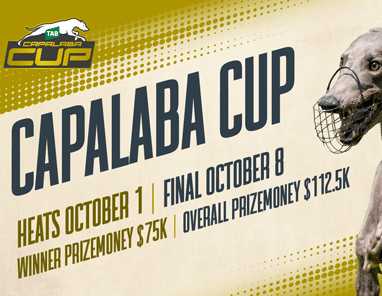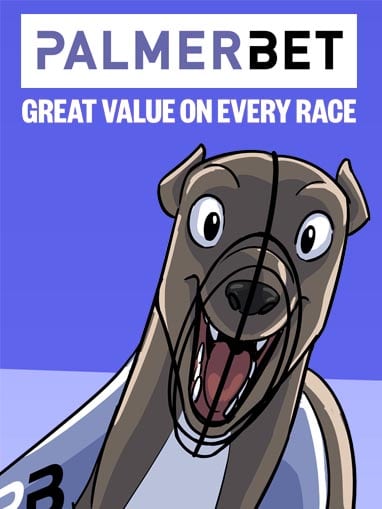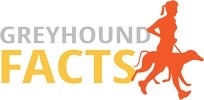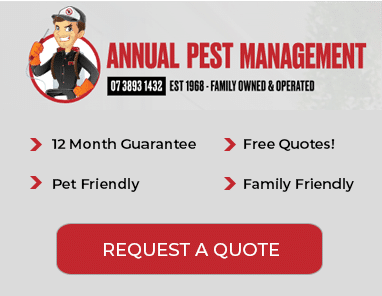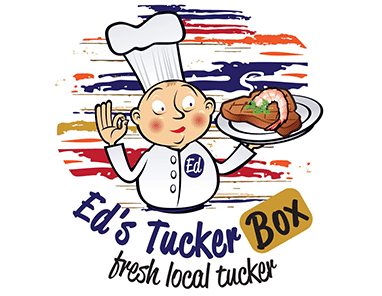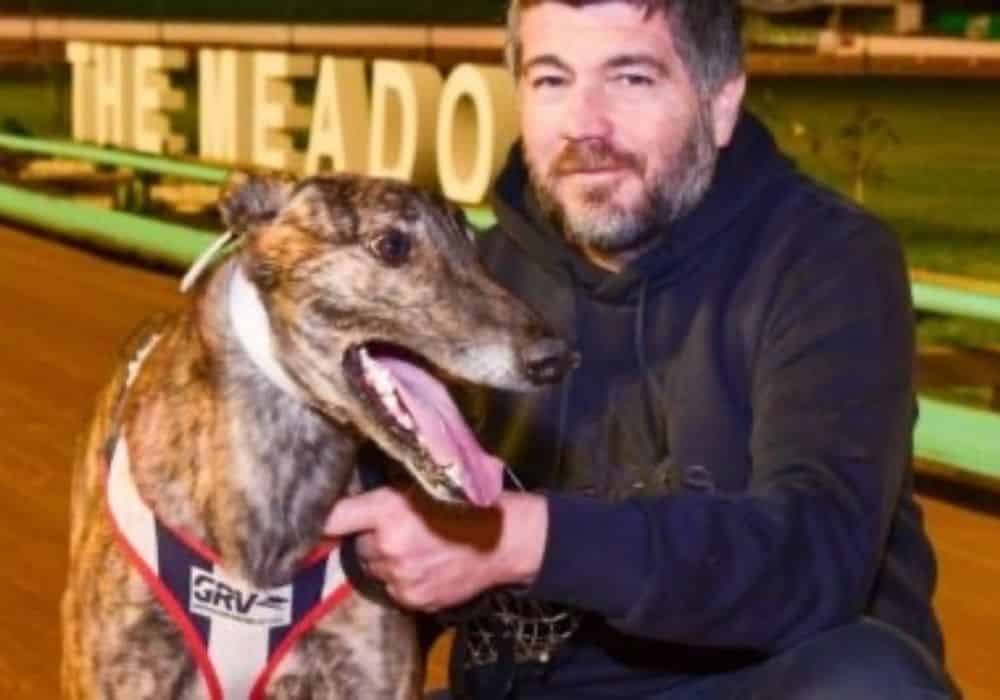
Caption: Successful Victorian trainer Mark Delbridge (Photo: BlueStream Pictures)
(SO you’ve got started in greyhound racing and had success. Your kennel of a few dogs proves you have what it takes to train a winner or two, or more. It’s your aim to branch out and get into the big time. With that in mind, Chase Newspaper asked leading trainer Mark Delbridge, 45, who has 104 kennels on his Balliang property in Victoria to give us an insight into what it entails running such an enterprise.)
By MARK DELBRIDGE
IT was never my intention 25 years ago when I bought the 35-acre greyhound property at Balliang where my wife Lisa and I run our kennels to become as big as we have.
Balliang is 20 minutes to Geelong racetrack, almost an hour to The Meadows and Ballarat, and an hour and a half depending on traffic to Sandown. When we moved to this property it had a kennel block for 12 dogs, pup yards, two 100m competition runs and a 350m straight track.
A quarter of a century later, Lisa and I have built that into three kennel blocks, which can house 104 dogs and those competition runs have grown to eight. The kennel blocks are Colourbond, but all are lined and have air coolers throughout.
There are numerous other sheds on the property to house all the machinery needed to keep the property spick and span, and the many vehicles needed to transport racing dogs to trials and race meetings.
While we have kennels for 104, generally between Lisa and myself, we keep about 70 to 90 in training at any one time. At this very moment I have 50 racing, another 12 in pre-training, and Lisa has 22 racing.
Our greyhound transport needs are catered for with one six-berth trailer, two eight-berth, one 10-berth, one 12-berth, two ex-ambulances fitted out with eight cages each, a Hyundai van with six cages, a Ford ute with a six-dog box on the back and a F250 with an eight-dog box on the back.
We use the Ford ute, the F250, the eight, 10 and 12-berth trailers to go trialling only.
The two ambulances, the Hyundai, the six-berth and one eight-berth trailer are used to go racing.
Our kennel is on the go constantly.
In one recent week, we had runners at: Monday Shepparton, Tuesday Horsham and Warragul, Wednesday The Meadows and Ballarat, Thursday Warrnambool and Sandown, Friday Bendigo and Geelong, Saturday The Meadows, Sunday Healesville, Sandown and Sale.
With such a busy schedule, including the daily chores around our property, we have plenty of workers. Dean and Shaun are full time and they go racing a lot.
Debbie lives at the property and she washes out the kennels, does mowing and even welding.
Obviously my wife Lisa is a huge part of the business. She does all the paperwork in regards to the business. I do all the nominations. Our son Myles, who is 16, is an integral part of the operation. He owns more of the dogs in the kennels than I do, and he’s been very lucky as well.
We also have Shane and Jack who help out with kennelling, handling and catching at tracks.
Our day starts at 7am.
The dogs are put into a run each and I walk up and down between the runs to get them exercising. Each lot gallops in those runs for about five to 10 minutes. We have to make sure the dogs are paired up right to get them to gallop.
By 9.30am we are ready to feed breakfast, which consists of a few slices of bread.
At 1.30pm we are ready to start again and all the dogs are exercised in the competition runs again as they were in the morning. We start feeding about 4pm.
Feeding is a mixture of roo, chicken frames minced, and bread.
The dogs who are racing will not get worked in the competition runs for a day and a half before a race.
Each Monday and Tuesday, Lisa heads 15 minutes down the road with those dogs who need muscles checked.
Lisa picks up the 540 kilos of chicken frames twice a week, and the 100 loaves of bread a week from Aldi. There is also a delivery of 240kgs of roo meat.
We have found this mixture of food works perfectly for our dogs and we hardly if ever have a problem with weights. We weigh every dog racing the night before their event and again as they are being loaded into the trailer to go racing.
After racing and upon arrival home, I purposely delay the feeding of those dogs who have raced to make sure they cannot suffer from a twisted bowel. I will go in home and watch a movie before feeding those dogs just to make sure we don’t have that problem.
With such an operation, obviously our expenses are great.
Dog food each month costs about $8000, fuel is $2500, power is $1400, wages about $10,000. Luckily we no longer have trial fees. But fees for catchers is a cost that keeps going up.
When I get a pre-trainer, I will charge $100 a week until the dog is ready to race. I find this time takes between eight and 12 weeks. Our owners pay all vet bills.
Great dogs will show you within four weeks if they have the goods. Within six to eight weeks, you will know if a dog will measure up.
The Wheeler family have been great supporters of our kennel and fortunately we have given them some great success.
They will ring to give us three week’s notice a load of dogs is coming here. Generally we can expect between 15 and 25 dogs. Then we get a phone call three or four days before delivery with the exact number.
At one stage, a couple of years ago, we received 50 dogs into the kennel from the Wheelers within two and a half weeks. They are happy to give the dogs at least one or two races even if they don’t measure up to our standards.
They have found it is easier to sell a dog if buyers can at least see what they can expect. It is harder to sell a dog with no form at all.
When racing, we try very hard not to race against ourselves although sometimes this is impossible to achieve. We try to spread the dogs out so this does not happen.
Each year, Lisa and I try to have an overseas holiday for a couple of weeks to make sure we get away from it all. And then we try to have another week or so during the year, a holiday with friends somewhere in Australia.
We could not do this without Shaun at the kennels. He has been with us for 10 years and is invaluable to our operation … just like everyone we have helping us.
In the first five months of 2021, the dogs in my kennel have won $756,000, while Lisa’s have won $124,000. This has been made look pretty good through Zipping Rambo winning the Sandown Cup. But, that’s a total for the first five months of $880,000.
In 2020 we won $953,000.
My advice for anyone wanting to get into training greyhounds is to chase the right dogs.
If a dog can’t run, the dog can’t run. It is no use holding on to it.
But, I’m just as aware that some dogs might find a small kennel a better environment than our kennel with so many in training. But, I can tell you we have never moved on a dog that turned its form right around.



